By Dan Weisz
All of the birds in this set are very common in my backyard and across the Foothills.
The Southeast Arizona Birding Festival, presented by Tucson Audubon, was held this past weekend. I volunteered as a way of both participating but also to give back for all that the Tucson Audubon Society provides for me and many others in the community throughout the year. One of my assignments was to drive a van of participants to The Pond at Elephant Head, a wonderful place to photograph birds, bats and wildlife. The Pond is located near Amado just east of the Santa Rita Mountains. There is a man-made pond with movable photo blinds and both bird food and ‘natural’ perches for the birds. Below are some of the portraits I was able to shoot of birds that are regulars in my backyard and the general Tucson area.
White Winged Doves appear in Tucson every summer. Their red eye lined with blue is stunning. If you live in Tucson, you wake up to the sound of White-winged Doves most summer mornings:
https://www.bird-sounds.net/white-winged-dove/
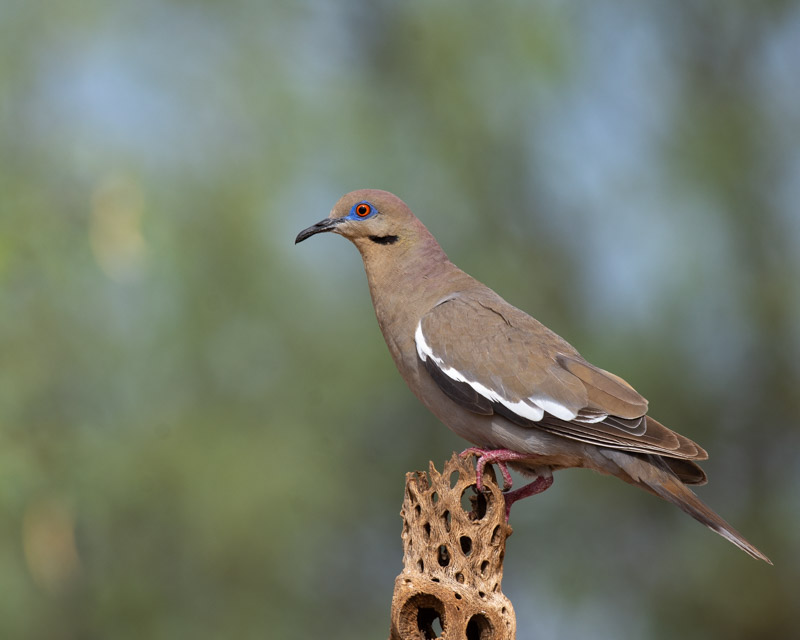
A male Gila Woodpecker sits on a cholla skeleton. As woodpeckers do, the bird uses his tail to support his perch. If you look closely, you can see that the cholla is ‘stuffed’ full of birdseed.
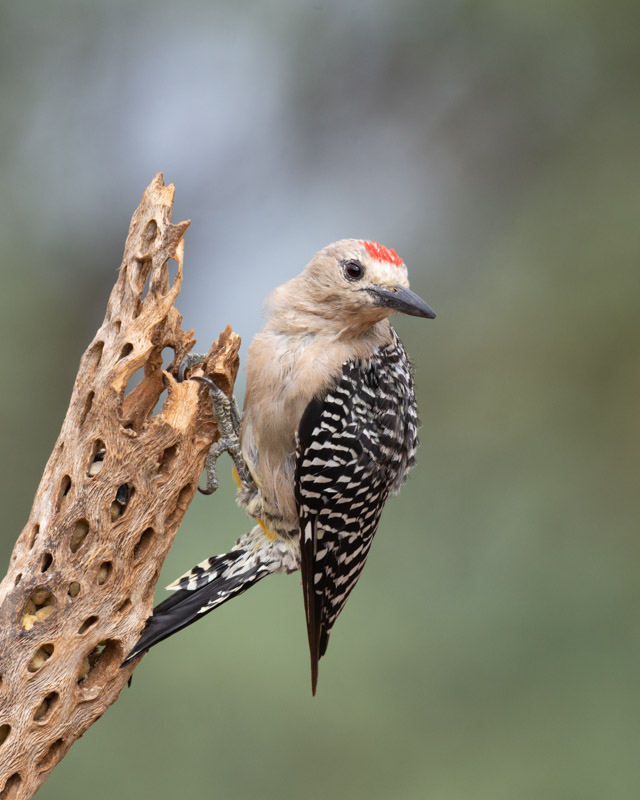
Curve-billed Thrashers are named after their curved bills! This grumpy looking bird is a juvenile and is in the process of losing juvenile feathers and getting its adult feathers. It reminds me of that teenage-acne look.
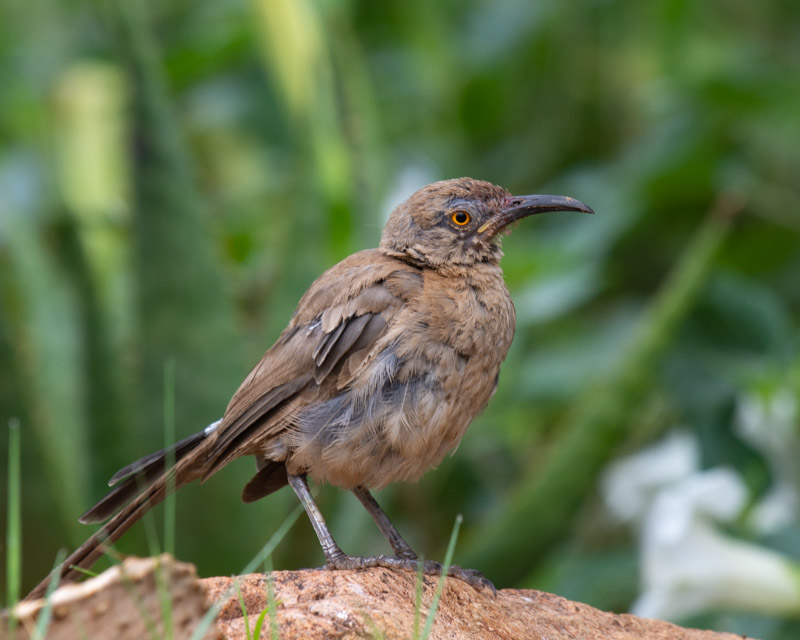
An adult Curve-billed Thrasher with its lightly spotted breast stands on saguaro ribs. Curve-billed Thrashers are related to Mockingbirds and have an equally impressive song repertoire. Their sound is unmistakeable and is heard throughout Tucson. To hear this birds’ ‘typical’ songs including its “whit-wheet”, click on https://www.allaboutbirds.org/guide/Curve-billed_Thrasher/sounds
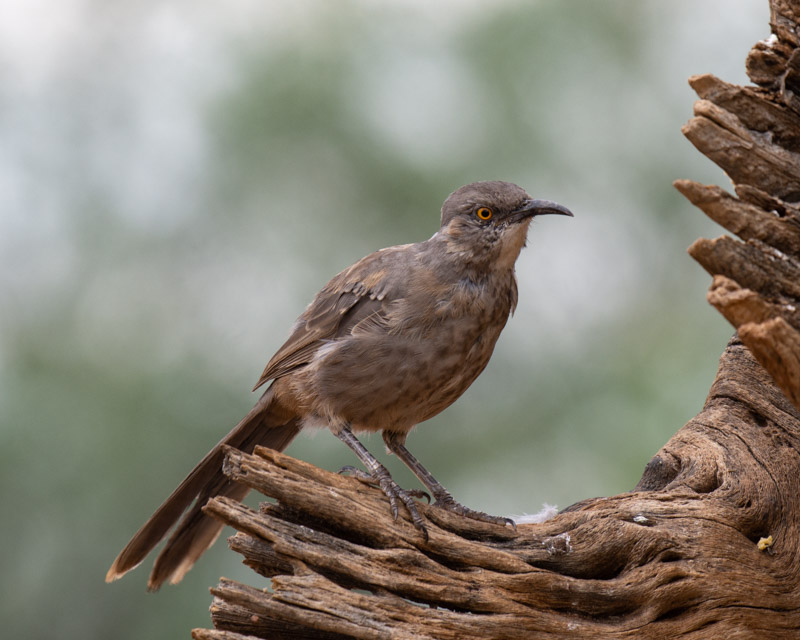
A male Gambel’s Quail on the same saguaro perch seen above. I like the triple crest he was wearing. Listen to the sound of the Gambel’s Quail:
https://www.bird-sounds.net/gambels-quail/
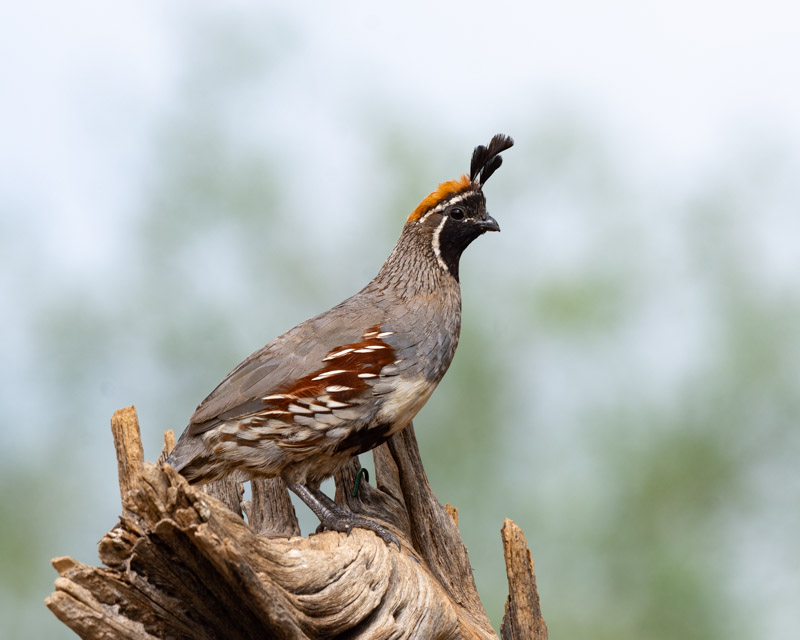
A “plain old” House Finch looking very bright against the bushes in the background. His color is a result of that saying “you are what you eat.” House finches acquire their coloration from pigments in the plant foods they eat, specifically the carotenoids. For a short piece on the colors of house finches, check out this BirdNote podcast: https://www.audubon.org/news/why-male-house-finches-can-be-different-colors
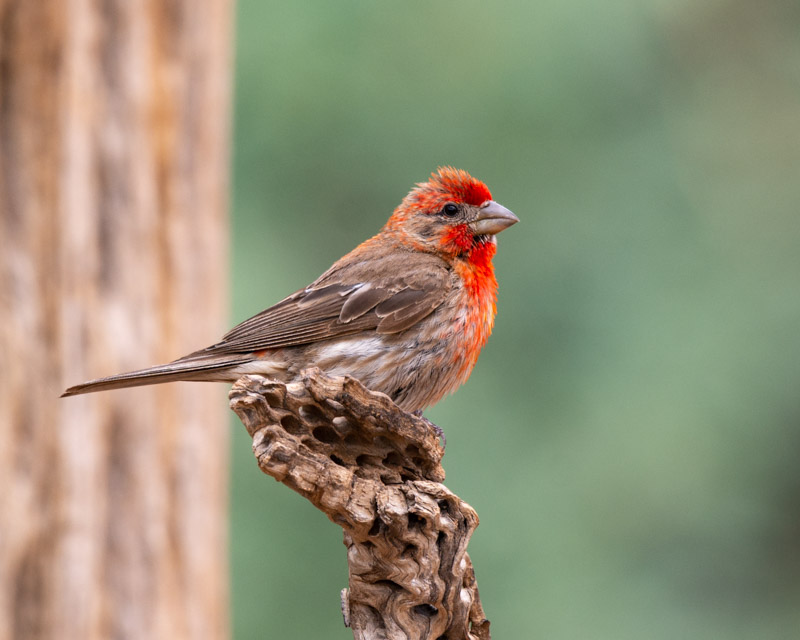
This male Lesser Goldfinch was drinking from the pond. Lesser Goldfinches live year-round in the Sonoran Desert. They forage among the seed crop they find and can be easily attracted to your backyard if you hang up a Nyjer Seed feeder.
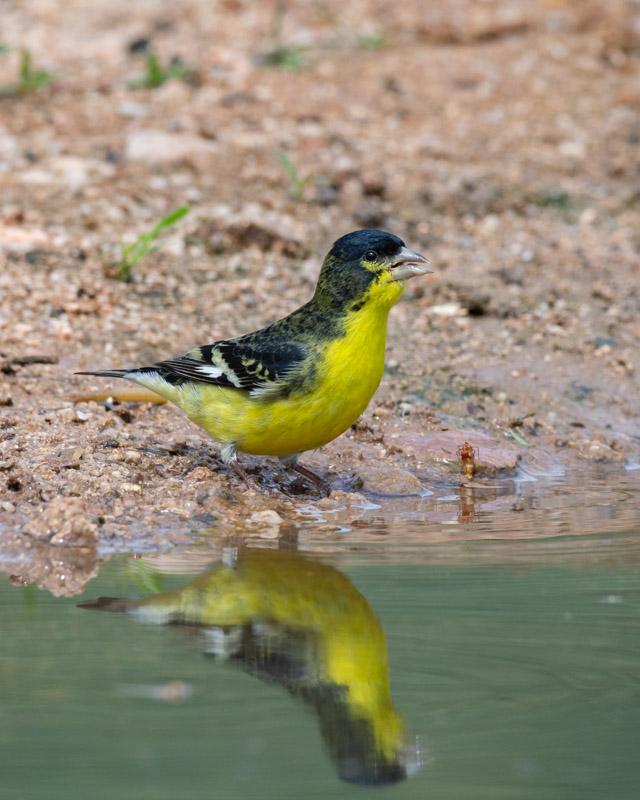
Another “plain old” bird, sometimes referred to as “just a” House Sparrow. House Sparrows are now common in all urbanized areas of the United States, but they are an Old World bird and not originally native to North America. The first House Sparrows in America were imported from England and introduced in New York City in 1850.
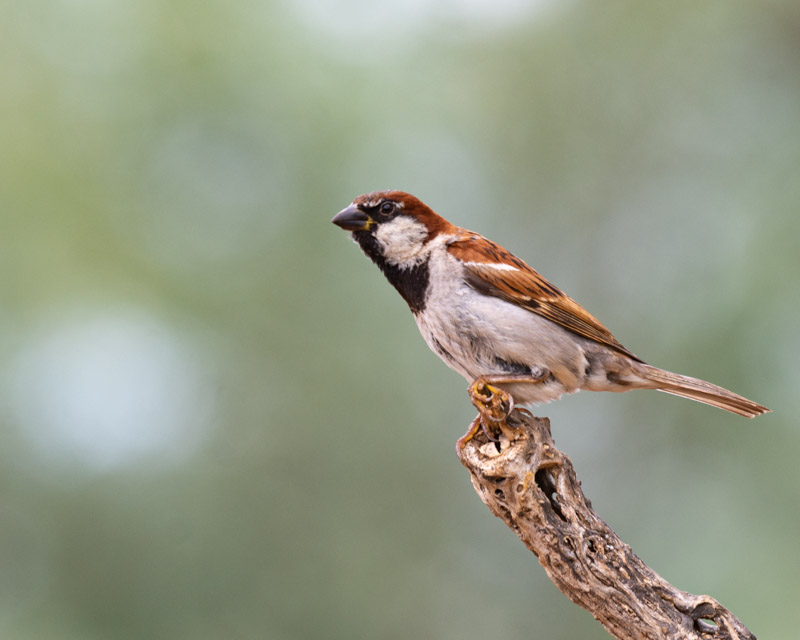
Finally, here is one bird that is not really a backyard bird in Tucson anymore. Inca Doves used to be more common in the Tucson area but they may have been one of our Cooper’s Hawks favorite meals. Their scaled feathering is unique.
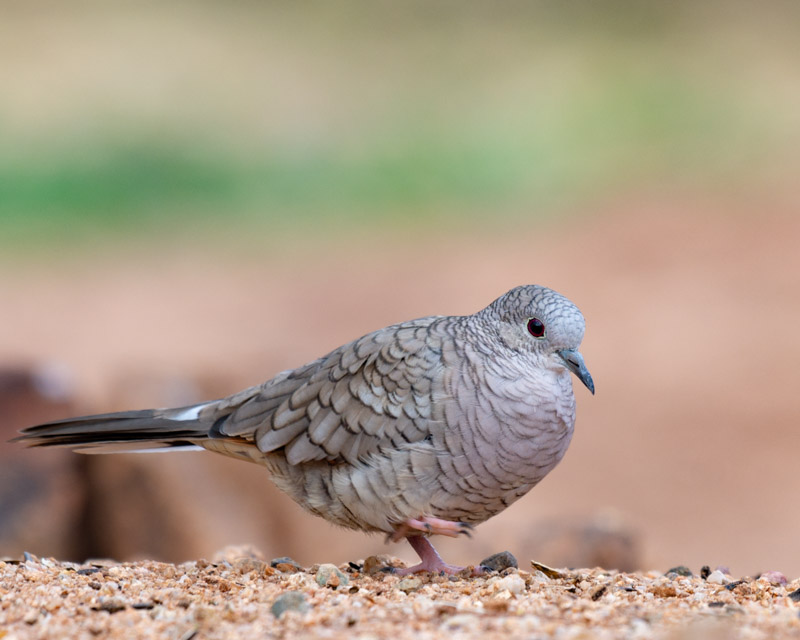
More birds and critters to come from Elephant Pond in the future.
Return to Foothills Clusters Home
